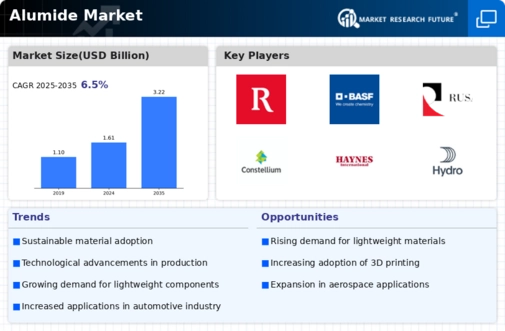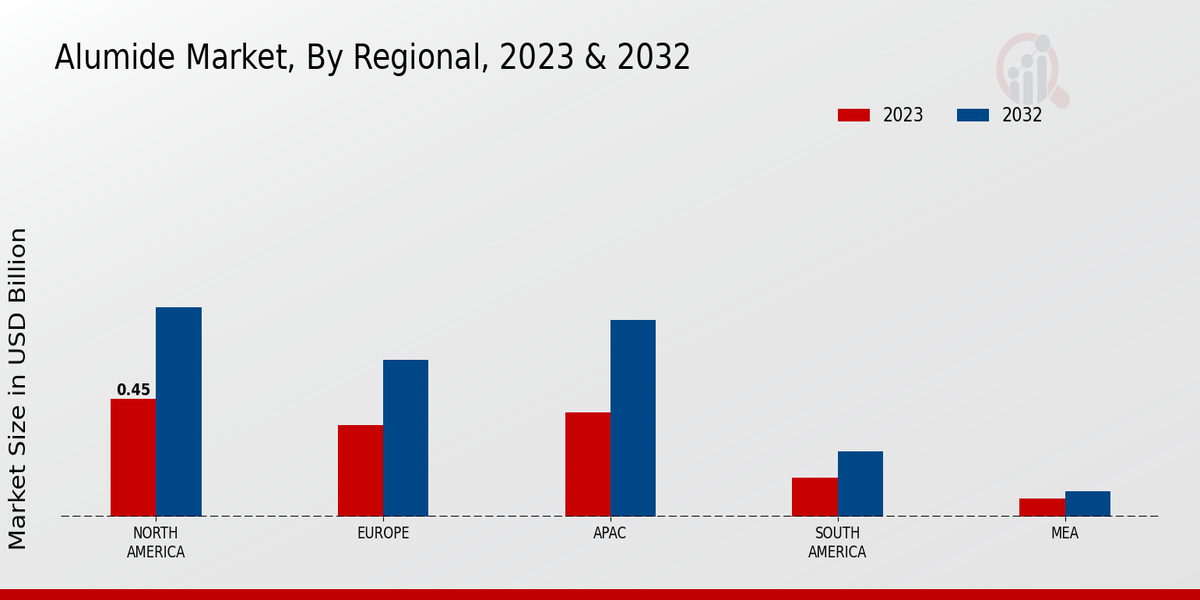Market Growth Projections
The Global Alumide Market Industry is poised for substantial growth, with projections indicating a market value of 1.61 USD Billion in 2024 and an anticipated increase to 3.22 USD Billion by 2035. This growth trajectory suggests a robust demand for Alumide, driven by its applications in various industries such as automotive, aerospace, and consumer goods. The compound annual growth rate (CAGR) of 6.49% from 2025 to 2035 further underscores the material's potential as industries continue to seek innovative solutions that leverage its unique properties. As the market evolves, it is likely to attract new entrants and investments, enhancing competition and innovation.
Growth in the Automotive Sector
The automotive sector's growth is a significant driver for the Global Alumide Market Industry. As the industry evolves towards electric vehicles and advanced manufacturing techniques, the demand for lightweight and durable materials like Alumide is on the rise. This material's properties contribute to improved vehicle performance and energy efficiency, aligning with the industry's shift towards sustainability. The market is anticipated to witness substantial growth, with a projected value of 1.61 USD Billion in 2024, as automotive manufacturers increasingly incorporate Alumide into their designs to meet consumer expectations for performance and environmental responsibility.
Rising Demand for Lightweight Materials
The Global Alumide Market Industry is experiencing a notable increase in demand for lightweight materials across various sectors, particularly in automotive and aerospace. As manufacturers seek to enhance fuel efficiency and reduce emissions, the adoption of Alumide, a composite material combining aluminum and nylon, is becoming more prevalent. This trend is expected to contribute to the market's growth, with projections indicating a market value of 1.61 USD Billion in 2024. The lightweight properties of Alumide not only improve performance but also align with global sustainability goals, making it an attractive option for industries aiming to innovate while minimizing environmental impact.
Technological Advancements in 3D Printing
Technological advancements in 3D printing are significantly influencing the Global Alumide Market Industry. The integration of Alumide in additive manufacturing processes allows for the production of complex geometries that were previously unattainable with traditional manufacturing methods. This capability is particularly beneficial in sectors such as healthcare and aerospace, where customization and precision are paramount. The market is projected to grow at a CAGR of 6.49% from 2025 to 2035, reflecting the increasing adoption of 3D printing technologies that utilize Alumide. As these technologies evolve, they are likely to enhance the material's applications, further driving demand in the global market.
Sustainability and Environmental Regulations
Sustainability and stringent environmental regulations are pivotal drivers for the Global Alumide Market Industry. Governments worldwide are implementing policies that encourage the use of eco-friendly materials, which positions Alumide favorably due to its recyclable nature and reduced carbon footprint. Industries are increasingly compelled to adopt sustainable practices, and Alumide serves as a viable alternative to traditional materials that may not meet these new standards. This shift is expected to propel the market towards a valuation of 3.22 USD Billion by 2035, as companies seek to comply with regulations while appealing to environmentally conscious consumers.
Increased Investment in Research and Development
Increased investment in research and development (R&D) is fostering innovation within the Global Alumide Market Industry. Companies are dedicating resources to explore new applications and enhance the properties of Alumide, which could lead to breakthroughs in various sectors, including construction and consumer goods. This focus on R&D is likely to yield advanced formulations and processing techniques that improve the material's performance and expand its usability. As a result, the market is projected to grow at a CAGR of 6.49% from 2025 to 2035, reflecting the potential for new applications and increased market penetration.















